Spanish News Today Editors Roundup Weekly Bulletin June 20
TOP STORIES: "It’s the Spanish summer solstice-San Juan megafiesta this weekend!" & "Dubious honour as Spain’s beaches awarded nearly 50 Black Flags for environmental mismanagement"
It’s time to head to the beach this weekend! Want to know why? Not only because this Saturday marks the official start of the best season of the year in Spain, but also because that means it comes with the celebrations for the Noche de San Juan fiestas, about which plenty more below.
Only thing is you’ve got to be careful which beach you head to as nearly 50 of them have been slammed by eco-warriors for their shameful environmental credentials. All this and more in this week’s edition of the Editor’s Roundup Weekly Bulletin for June 20.
St. John and the summer solstice
Every year, as the calendar edges towards the end of June and Spain begins to sizzle under the summer sun, something magical happens. The skies stretch out their daylight hours to the limit and the beaches come alive for one special night of the year with crackling fires, fireworks and revelry. This is the strange, combined celebration of the summer solstice, the longest day of the year, and La Noche de San Juan, the Catholic feast day of St. John the Baptist.
The
summer solstice in 2025 is on Saturday June 21, signalling the start of astronomical summertime at precisely 4.42am Spanish peninsular time. This is the day of the year when the sun hits its highest point in the sky. The word ‘solstice’ comes from the Latin for ‘sun stands still’, and for that brief window, it sort of does. The result is a glorious day with more sunlight than ever before, provided it’s not too overcast, of course.
This astronomical event happens because the Earth’s axis is tilted at just the right angle to make the northern hemisphere soak up every last golden ray. It’s also why, from this day onward, the days start getting shorter again. Slowly, sure, but it’s the first sign that we’re on a gentle glide back towards autumn and winter. It seems a horrifying thought when we’ve barley started to enjoy the summer, but don’t start panicking yet – we’ve got a long, hot summer ahead of us before the clocks start doing their annoying early-dark thing again.
While some folks in the UK head to Stonehenge to celebrate the solstice with spiritual chants and flower crowns, Spain has its own answer to connecting with the elements. Enter
La Noche de San Juan, or Saint John’s Eve, celebrated on the night of June 23 each year and stretching into the wee hours of June 24, which is the Día de San Juan (a good day to say “
felicidades” to anyone you know who may be named Juan).
The San Juan celebrations are loosely tied to the solstice, although they land a couple of days after, blending together – as most modern celebrations do in the west – ancient pagan rituals and a splash of Christianity.
Originally, the whole fire-on-the-beach idea came from pre-Christian beliefs; Celts, Iberians and assorted other ancient types who believed fire had purifying powers and could keep away bad vibes (and possibly mosquitoes) used to light fires on the beach during the solstice. Fast-forward a few centuries, and the Catholic Church added a saint to the mix, St. John the Baptist, no less, whose feast day is on June 24, and suddenly those beach bonfires came with biblical backing.
In case you didn’t know, what happens during San Juan is that bonfires (‘hogueras’) are built on beaches, in fields and sometimes even in town squares. Then, just as the fire gets going and the music kicks in, people are traditionally supposed to start jumping over the flames as a way to burn off bad luck, washing away last year’s regrets and starting afresh. Though modern health and safety rules mean that, in practice, the fire-jumping does not tend to happen at any official celebrations, only at smaller, private hogueras.
Some people say you can also write down your wishes onto a bit of paper and toss them into the fire, or even go have a midnight swim in the sea. There are lots of different traditions and superstitions connected with it. Different corners of Spain put their own spin on San Juan, of course. In Alicante, the party is supercharged with the
Hogueras de San Juan, enormous sculptures of wood and cardboard that are paraded around, admired and then spectacularly burned in a blaze of fireworks. It’s not a one-night event either. The whole weekend is a fire-lover’s dream, with mascletàs (those intense firecracker shows) and daily parties leading up to the big night.
In Galicia, up in the northwest, they lean into their Celtic roots. Bonfires are still big, but they add a dose of spooky charm with witches, spells and the famous queimada, a flaming alcoholic brew prepared with a special incantation that sounds equal parts magical and mildly threatening. In Catalonia, San Juan is all about cava, fireworks and a sweet flatbread called coca de Sant Joan, topped with candied fruit and pine nuts.
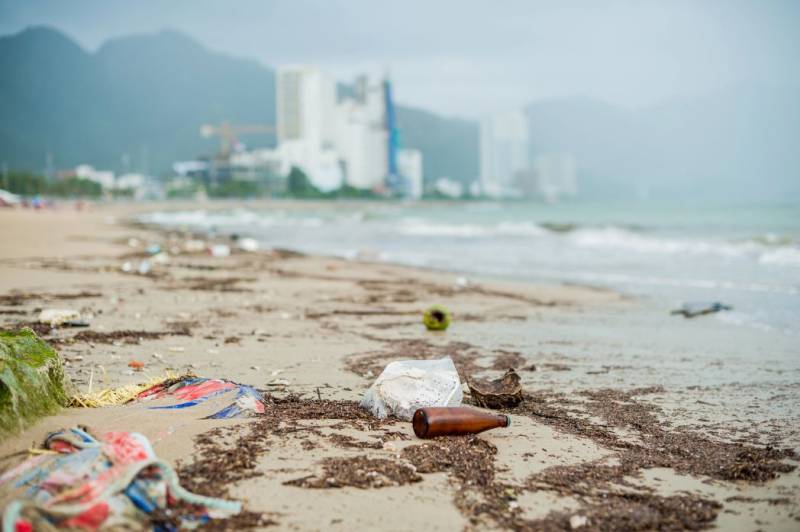
If there’s one downside to this otherwise sparkling night of culture, community and cosmic connection, it’s the mess left behind. By the morning of June 24 – the actual feast day of Saint John and a bank holiday in places like Alicante and Almería – it’s not uncommon to see beaches covered in empty bottles, soggy clothes and various bits of party debris.
Many towns have now wised up and bring in extra cleaning crews to get things back to their pristine summer-ready state before lunchtime rolls around, but it does mean that San Juan not exactly the most ideal day of the year to go to the beach.
Still, it’s all part of the package. San Juan in Spain is one of those weird, wacky fiestas that is part tradition, part just another excuse for a party. If you can, do head over to a local beach or bonfire that is going up to witness it, as it is quite a sight.
Flagged up
While most of the beaches in the country manage to get their shine back by mid-morning on June 24, there are some coastal areas that are never quite up to scratch at any time of year. Yes, this is the news that environmental organisation Ecologistas en Acción has once again handed out its annual Banderas Negras, or ‘Black Flags’, to sites across the Spanish coastline.
The Black Flags are a kind of anti-Blue Flag. While the Blue ones are handed out to beaches that manage to keep their sand clean and their toilets flushing, the Black Flags are reserved for places suffering from pollution, overdevelopment and environmental destruction.
One of the Black Flags this year, for the public beach in Moaña, Galicia, was awarded for straight-up land grabbing by none other than the leader of the Spanish conservative Partido Popular party, Alberto Núñez Feijóo, and his partner Eva Cárdenas, who apparently think it is their own personal backyard.
In fairness, it is Feijóo’s opposite number, President Pedro Sánchez, who is mainly under fire this week in Congress (heavy is the head that wears the crown) for a corruption scandal in his ruling PSOE socialist party, but let’s try to stay away from politics for the meantime, shall we? At least until he’s forced to resign or something…
Of course, the Region of Murcia made the Black Flag list again. The Mar Menor picked up a Black Flag again this year for what Ecologistas en Acción calls long-standing and worsening environmental mismanagement. Despite the progress that’s being made, they say, the urban sprawl and agricultural runoff that still plague the Mar Menor, as well as a project to widen the Estacio channel – a move that let more Mediterranean water and invasive species into the lagoon – have once again secured the Mar Menor’s place on this list.
Murcia’s second black mark this year goes to the Bahía de Portmán (pictured, above), a place that’s long been a cautionary tale about what happens when you let big industry dump their mining waste directly into the sea for decades. Over eight square kilometres of coastal water have been ruined, and although plans for regeneration have been thrown around for years, the bay remains a toxic reminder of how bad things can get.
Just across the border in Orihuela Costa and Torrevieja, Cala Mosca beach and Cala Ferris earned Black Flags too, as well as the Playa del Levante in Benidorm, so that’s the three biggest tourist destinations in the province of Alicante.
This year’s Black Flag report takes a particular interest in the brazen takeover of public coastal land. This isn’t just about people putting up a fence or a no-trespassing sign. It’s about the creeping privatisation of spaces meant for everyone.
In Vigo, for instance, the Toralla Island development has turned the entire island into a private estate, complete with barriers and a hearty dose of official indifference. In Ribadeo’s Isla Pancha, also in Galicia,, the public has to make way for private businesses, even in areas that technically belong to protected nature reserves.
Down south, Ecologistas en Acción bemoan the fact that some chiringuitos in Andalucía have basements now, turning what were supposed to be temporary beach bars into more permanent structures with concrete foundations, built right on the coast, in contravention of Spanish building regulations.
On the Canary Islands, the towering Hotel RIU Palace Tres Islas planted right in the sand dunes of Corralejo has been collecting Black Flags like they’re TripAdvisor badges, and Catalonia doesn’t get a pass either. In Girona, what little untouched coast is left is being eyed up for commercial development, even in flood-prone areas like the Rec d'en Feliu river mouth and La Farella beach.
As much as we all love Spain for its beaches, there are many environmental injustices, and by no means all historical ones, that should make us think again about how a country utilises its natural resources for economic gain, and what the real long-term cost is.
You can see all the Black Flag beaches here:
Murcia
Two women suffered life-threatening injuries and were rushed to Virgen de la Arrixaca Hospital in Murcia. One, a 38-year-old foreign national and current manager of the bar, was admitted to the Burns Unit.
At first, people feared it might have been a bomb or even an aircraft breaking the sound barrier. The bar, which suffered a fire earlier this year, was closed at the time of the explosion. Authorities suspect a gas leak as the cause.
Just a day earlier, a
flurry of forest fires broke out across the Region, all sparked by lightning strikes during evening storms. In total, 14 separate wildfires flared up in places including Yecla, Totana, Mazarrón, Jumilla, Alhama de Murcia, Fortuna, Lorca, Cieza, Cehegín, Cartagena and Caravaca de la Cruz.
Fortunately, local fire crews were quick off the mark, managing to contain all the blazes before they got out of hand. Their quick response shows how effective the forest fire surveillance network is turning out to be, which is just as the spring rains have left more vegetation in rural areas than usual, which combined with the hot, dry summer now underway could make for a particularly risky season for wildfires.
But it is Consum, the Valencian-based supermarket cooperative, that is
making a serious push into the Region of Murcia, challenging the long-standing dominance of Mercadona. Consum already has a solid presence in the area, but they’re not stopping there. A total of three new stores are opening: two in the cities of Murcia and Cartagena by the end of the year, and one that’s already opened its doors in Caravaca de la Cruz.
This new Caravaca store has an interesting backstory. It’s one of nine locations that Consum acquired from Kuups Design International, previously operating under the Economy Cash name. The building has now been revamped, rebranded and relaunched, and Consum even kept the entire team of 35 workers who were already employed there, a nice touch in a time when retail restructures often mean job losses.
Consum now operates 52 stores in the Region of Murcia and aims to reach 54 with the other two new openings later this year, and they surely have big expansion plans for 2026 and beyond.
The goal is to make local train travel more convenient, meaning no more paper tickets to fumble with or misplace. There are two versions of the card available (personalised and non-personalised), and both are rechargeable and valid indefinitely. If you lose the card, you won’t lose your travel credit, which makes it a handy upgrade for regular commuters.
Meanwhile, at the Region of Murcia International Airport in Corvera, a rather symbolic event took place this week. A Ryanair flight arriving from Birmingham was the airport’s 1,200th flight so far this year, and this year also happens to be the city of Murcia’s 1,200th anniversary celebrations, which they are making a big fuss over.
The opportunity wasn’t lost on city officials, who marked the occasion with a hastily cobbled-together
ceremony and photo op on the tarmac, where local dignitaries welcomed the bewildered flight crew and passengers, handed out honorary diplomas and unveiled a commemorative plaque. Probably a little bit overkill.
Speaking of culture and heritage,
Alhama de Murcia just unveiled a new hiking trail that mixes outdoor adventure with a nod to local mountaineering legends. The PR-MU 131 route, also known as the Sendero Baldomero Brugarolas, is a 16-kilometre trek that climbs from the town centre all the way up to the historic snow wells in the Sierra Espuña.
It’s not an easy hike, rising from 200 metres to over 1,100 metres above sea level, but it’s now fully signposted thanks to work by the Town Hall and local historians. The route pays tribute to Baldomero Brugarolas, a pioneer in the Murcian climbing world, and includes visits to the snow wells that were used centuries ago to store ice before the invention of refrigeration.
The project has just gone out to tender, with companies invited to bid before July 3. With a €1.14 million budget and backing from Murcia City Council, the facility is set to include three tennis courts, two pickleball courts and a range of accessibility upgrades, shaded areas and even graffiti murals.
It’s not just about bricks and mortar either, as there’s also a planned partnership with the Carlos Alcaraz Foundation to develop academies, competitions and educational programmes for young people. It’s another step towards cementing Murcia’s status as a hub for racket sports, inspired by one of its most successful homegrown talents. Now let’s wait and see who, if anyone, decides to bid for the construction contract.
See the EVENTS DIARY for more events and activities coming up soon around the Region of Murcia:
Spain
It’s only just the start of official summertime, but already Spain is experiencing what meteorologists are calling a heatwave – the second of the year so far – and at the same time there have also been violent thunderstorms sweeping across much of the country with fierce winds, hail and torrential rain, especially in the central, eastern and northern regions.
Aemet is warning people to stay alert as the storms aren’t over yet and the heatwave and storms linger into this weekend. It’s all part of a growing global pattern: more frequent, more extreme and more unpredictable weather. This is not just your usual ‘it’s hot because it’s summer in Spain’. This is a pattern going back decades of increasingly
crazy weather patterns that throw up an increasing number of outliers from our established climatological models.
That is to say, what we think of as our regular climate conditions – hot and dry in summer, cold and wet in winter – are changing and becoming mixed up in a way that is difficult to foresee, and this creates tough or even potentially dangerous situations for people and the places we live in.
To make life easier just that little bit easier for international residents and tourists, especially during these scorching spells, the Spanish government has introduced an
English-language version of its National Heat Alert System. This move follows a nudge from the British Embassy in Madrid and is aimed squarely at helping the English-speaking community stay informed and safe.
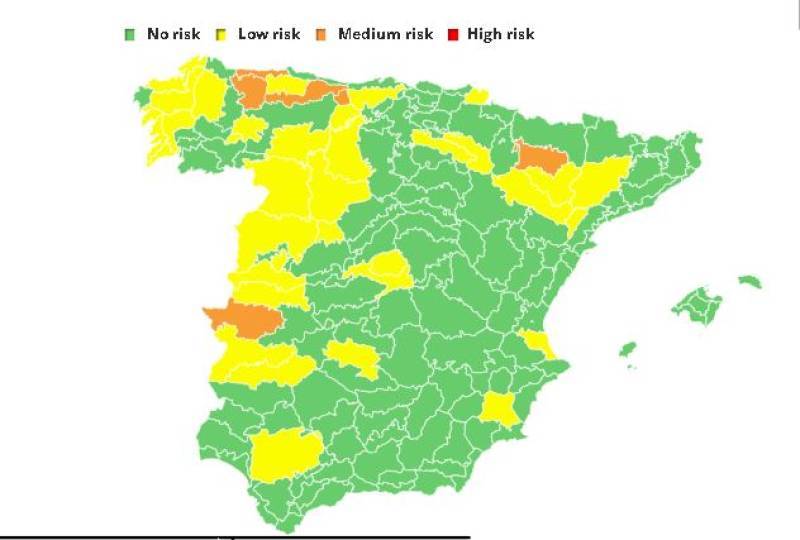
The system is particularly valuable for vulnerable groups like the elderly, people with existing health conditions and families with young children. It offers three-day forecasts for high temperatures, with alerts customised by province and across 182 specific zones that often include multiple municipalities.
What makes the system really useful is how tailored it is: Spain’s geography and climate vary massively, so what counts as extreme heat in one region might be totally normal in another. The alerts take this into account. For instance, 30°C might not raise eyebrows in Sevilla but would trigger a warning in cooler Oviedo. The alerts are colour-coded, ranging from Level 0 (no risk) through to red (maximum risk), so users can easily see when it’s time to take extra precautions or at least find the nearest shady terrace with a cold drink.
The unprecedented outage sparked serious questions about the stability of the country’s energy infrastructure. Now, the report on what caused it points to a complicated tangle of technical glitches and vulnerabilities that snowballed into what it euphemistically being called a “multifactorial failure”.
It turns out the blackout was not caused by any sort of cyberattack at all, but rather by an imbalance between two types of electricity supply – synchronous and asynchronous – which led to the entire system collapsing. If you have any idea what on Earth that’s supposed to mean, answers on a postcard would be appreciated.
To make matters even more confusing, the report noted that investigators were working with incomplete and inconsistent data. The Ministry for Ecological Transition admitted there were key gaps in the information received and that some expected data never even arrived. The public version of the report has been anonymised to comply with privacy rules, but it still paints a concerning picture of poor security protocols, power plant disconnections and electrical oscillations.
In response, the government is preparing a new decree law designed to tighten oversight and reinforce the resilience of Spain’s power grid. This legislation, expected next week, is meant to ensure the country doesn’t experience a similar energy meltdown again. It’s a sobering reminder of just how complex and vulnerable modern infrastructure can be when all the parts don’t quite work in sync… or async, as the case may be.
Anyone planning to fly with easyJet later this month might want to double-check their travel plans. The airline’s cabin crew in Spain have announced a
three-day strike set for June 25, 26 and 27, targeting some of the most popular bases in Barcelona, Alicante, Málaga and Palma de Mallorca.
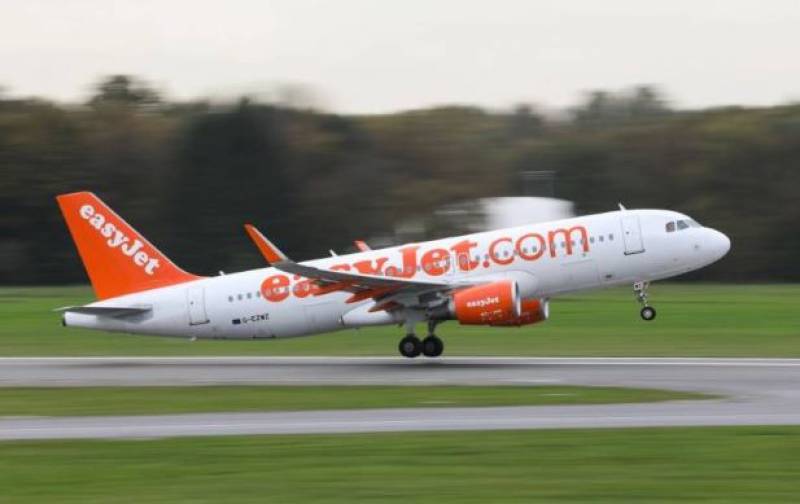
The strike will involve 657 crew members and 21 aircraft, and it’s expected to cause significant delays and possible cancellations, right at the start of the busy summer travel season. The action has been called by the USO union, which argues that Spanish easyJet crew are paid far less than their counterparts in other European countries. According to Pier Luigi Copello, the union’s general secretary, some staff are earning wages close to Spain’s minimum, while the salary gap with other European bases can range from 30% to a staggering 200%.
The union says it’s simply asking for fair and equal treatment. With the cost of living in Spain now on par with much of Europe, the workers feel their wages should reflect that reality. However, despite ongoing negotiations over a new collective bargaining agreement, easyJet’s financial proposals so far have been described as “insufficient” and out of touch with economic conditions on the ground, which incidentally is exactly where your flight might be staying later this month.
Alicante
Drivers heading into the Region of Murcia along the coast from Alicante province, who have been facing delays for well over a month, may finally see some light at the end of the tunnel.
A section of the southbound carriageway of the AP-7 motorway in Pilar de la Horadada has been closed for repairs since a horrific accident on May 9.
A truck driver was killed after his vehicle overturned, caught fire and exploded. The tragedy caused significant damage to infrastructure inside the tunnel, forcing traffic to be diverted onto the N-332 and streets of the municipality.
The national road only has a single lane in each direction in Pilar, resulting in long tailbacks of vehicles trying to reach San Pedro del Pinatar or rejoin the motorway at the next junction there.
Alternative solutions to this bottleneck have not been possible, since the Ministry for Transport considers it too dangerous to temporarily allow the other carriageway to be used by traffic in both directions, and the only other routes are “unsurfaced secondary roads”.
Despite the best efforts of local Spanish press and us here at Spain Today Online, nobody has been able to give a definitive prediction as to when the work will be finished.
Although the mayor was relieved the road is expected to reopen in time for the deluge of tourists and residents who flock to the municipality for the summer, it proved impossible to obtain official confirmation from either the roads unit or the motorway concessionary AUSUR, which hired the contractor that is carrying out the work.
Pérez assured “the works are making progress as they were planned”, but this is hard to gauge since no completion date was ever given.
One thing is certain: regular users of the AP-7 and N-332 in this area will be extremely relieved when things finally return to normal, at least until other scheduled work to improve energy efficiency and safety in the tunnel, which had to be postponed after the crash, can be carried out after the summer instead.
Residents of many towns in Alicante province may have been caught off guard this month if they had not seen the news that there would be
scheduled power cuts this week.
The outages hit Alicante city, Benidorm, Callosa d'en Sarria, Castalla, Denia, Elche, Elda, Javea, La Nucía, Villena, Monovar, Moraira, Mutxamel, Novelda, Orihuela, Petrer, Pilar de la Horadada, Raiguero de Bonanza, Salinas, Sant Joan d'Alacant and Villajoyosa.
The length of time that residents were affected varied from as little as 15 minutes up to as long as 6 hours, depending on where they lived.
Fortunately, these cuts were only to enable electricity group Iberdrola’s distribution company, i-DE to carry out maintenance, which promised to give everyone affected 24 hours’ notice and put up signs at affected buildings.
Despite the inconvenience, hopefully the maintenance work will mean there is less chance of them being affected by an unscheduled blackout in the future.
One of the many regular complaints made by residents of Orihuela Costa is the state of the roads, which had become littered with potholes that were getting bigger and more numerous as months passed without them being repaired.
The potholes were causing damage to vehicles and even accidents, including a girl who fell off a scooter and needed 20 stitches in her face, so it was only a matter of time before something worse happened, especially with summer fast approaching.
He claimed they had covered “practically the whole coast and resolved significant deficiencies in the road network”, but the Unidos Por La Costa residents’ association noted that there are approximately 700 roads in Orihuela Costa, and many more dangerous potholes were left untouched.
They also questioned the councillor’s claim that the damage had been caused by all the rain this spring, and alleged the “neglect and inaction of the [Coastal] department was to blame for not having acted much sooner and for having allowed the road maintenance service to end without putting the new contract out to tender”.
With a new contract and additional investment scheduled, residents of the coast are hoping that this long-standing problem will improve in the future, but based on past experience, they are not counting their chickens yet!
Andalucía
The Vivemar Hotel, previously known as Vistamar, was found to be missing from the official Andalusian Registry, despite repeated requests from authorities for the correct paperwork. The closure came despite the hotel being 98% occupied, including large tour groups and elderly visitors from the IMSERSO (Institute for the Elderly and Social Services) programme.
The current operator, Vive Resort Management SL, blamed the issue on a paperwork mix-up by the previous management. The legal owner, meanwhile, insists the lease was not disclosed and is fighting the matter in court. Hotel manager Alberto Tusquellas criticised how the closure was handled, saying it created confusion and that guests had to go in and out through the car park.
No one was evicted and the guests were allowed to stay there, but the case has stirred concern about how these new regulations are being enforced, especially during the busy summer season.
Michael Riley was detained under an international warrant and is expected to face extradition to Spain. The victims, Ross Monaghan and Eddie Lyons Jnr, were linked to the Lyons crime clan in Glasgow. They were shot at close range outside Monaghans Bar while watching the Champions League final.
The attack stunned locals and reignited concerns about British gang activity along the Costa del Sol. Monaghan, who previously survived a shooting in Glasgow, had relocated to Spain years ago. Lyons Jnr also had a violent history.
Police Scotland has said there is no current intelligence connecting the killings to the Lyons-Daniels feud, which has caused years of gang violence in Glasgow.
Each participant brought homemade regional dishes, from salmorejo cordobés, a chilled, creamy tomato and bread soup from Córdoba, to caldereta del Mar Menor, a rich seafood stew typical of Murcia’s coastal kitchens, turning the centre into a mini culinary tour of Spain.
The tables were also filled with ensaladilla, the much-loved potato salad mixed with mayonnaise and tuna or prawns; chanfaina salmantina, a hearty meat and rice dish with paprika and local spices from Salamanca; and Perotas, traditional meatballs from Málaga, served in a savoury tomato sauce.
The event was a hit with everyone involved, offering not just good food but a welcome sense of community and shared heritage.
Staff say the event was such a success that they plan to hold more like it in the future, as a way to connect residents with their cultural roots and each other.
You may have missed…
- Stop overpaying: How non-residents can save on Spanish property taxes.
For many non-residents, buying a home in Spain is a lifelong goal, whether it’s a sunny escape or an investment. But owning property here also comes with its share of responsibilities, including staying on top of your tax obligations, even if you don’t live in Spain full-time. The good news is that with the right approach, you can reduce your tax burden legally and avoid overpaying, according to IberianTax.
- Cool off this summer with 3 healthy ice-creams recommended by Spain’s consumer watchdog.
Spain’s consumer watchdog, the OCU, has scoured the supermarket shelves and revealed the top three ice-creams that are kind to your waistline while still delivering that delectable taste.
- Carrots and spuds shoot up in price as Spanish shoppers feel the pinch.
Spanish consumers are still seeing confusing price shifts at the checkout and have found that, while some staples have become cheaper, others are climbing noticeably, especially vegetables.
- Murcia to offer new €100 tax break for pet vet bills.
Pet owners in the Region of Murcia will soon be able to claim back some of their veterinary expenses on their income tax, regional president Fernando López Miras has confirmed.
- In pictures—Thousands flock to San Javier’s legendary International Air Festival.
A photo gallery showing the fantastic Aire25 air show in San Javier last weekend!
There it is for another week. Thank you for reading and we’ll be back next week.
See ya then!



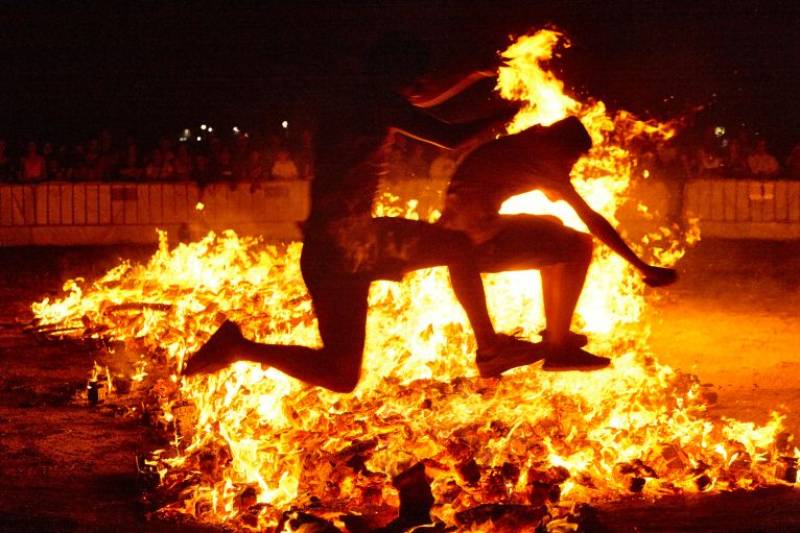

 If there’s one downside to this otherwise sparkling night of culture, community and cosmic connection, it’s the mess left behind. By the morning of June 24 – the actual feast day of Saint John and a bank holiday in places like Alicante and Almería – it’s not uncommon to see beaches covered in empty bottles, soggy clothes and various bits of party debris.
If there’s one downside to this otherwise sparkling night of culture, community and cosmic connection, it’s the mess left behind. By the morning of June 24 – the actual feast day of Saint John and a bank holiday in places like Alicante and Almería – it’s not uncommon to see beaches covered in empty bottles, soggy clothes and various bits of party debris.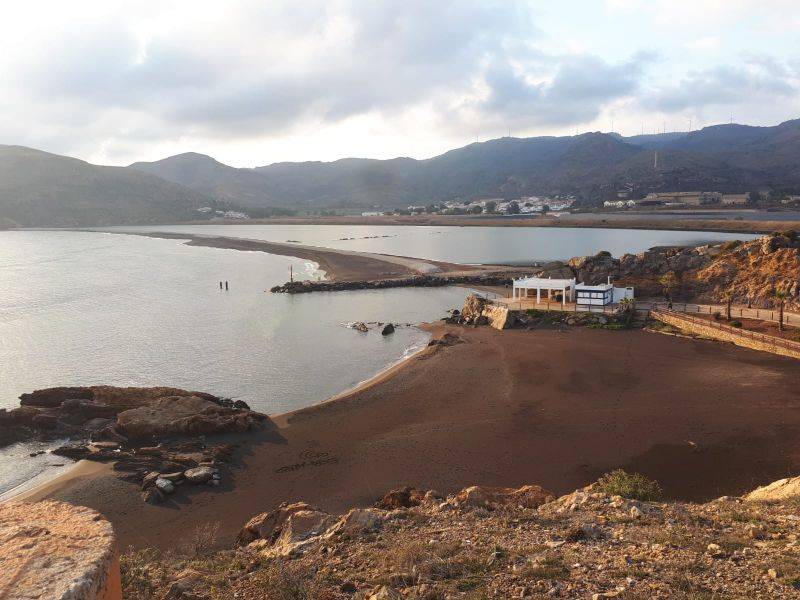
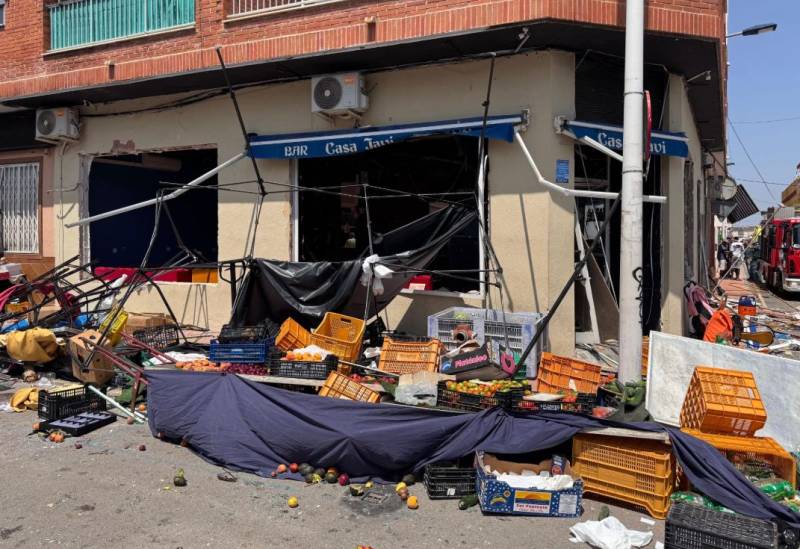

 The system is particularly valuable for vulnerable groups like the elderly, people with existing health conditions and families with young children. It offers three-day forecasts for high temperatures, with alerts customised by province and across 182 specific zones that often include multiple municipalities.
The system is particularly valuable for vulnerable groups like the elderly, people with existing health conditions and families with young children. It offers three-day forecasts for high temperatures, with alerts customised by province and across 182 specific zones that often include multiple municipalities. The strike will involve 657 crew members and 21 aircraft, and it’s expected to cause significant delays and possible cancellations, right at the start of the busy summer travel season. The action has been called by the USO union, which argues that Spanish easyJet crew are paid far less than their counterparts in other European countries. According to Pier Luigi Copello, the union’s general secretary, some staff are earning wages close to Spain’s minimum, while the salary gap with other European bases can range from 30% to a staggering 200%.
The strike will involve 657 crew members and 21 aircraft, and it’s expected to cause significant delays and possible cancellations, right at the start of the busy summer travel season. The action has been called by the USO union, which argues that Spanish easyJet crew are paid far less than their counterparts in other European countries. According to Pier Luigi Copello, the union’s general secretary, some staff are earning wages close to Spain’s minimum, while the salary gap with other European bases can range from 30% to a staggering 200%.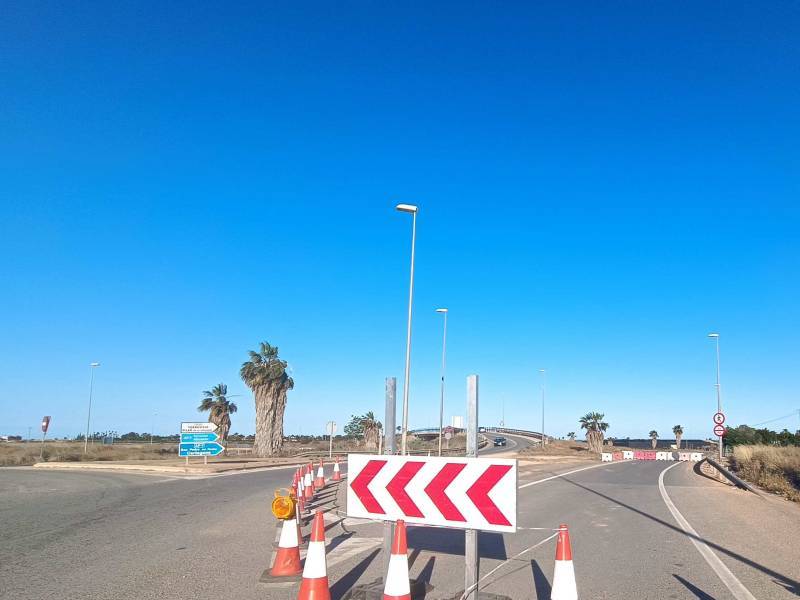
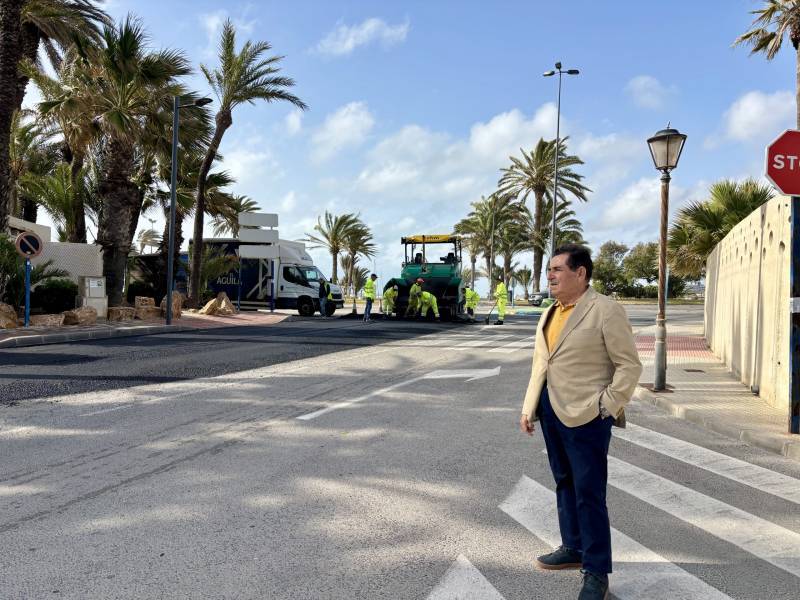
 In an unusual scene this Tuesday, local police sealed off a hotel in Benalmádena while it was still packed with more than 200 guests after it was found to be operating without proper registration under Andalucía’s revised tourist accommodation laws.
In an unusual scene this Tuesday, local police sealed off a hotel in Benalmádena while it was still packed with more than 200 guests after it was found to be operating without proper registration under Andalucía’s revised tourist accommodation laws.
















